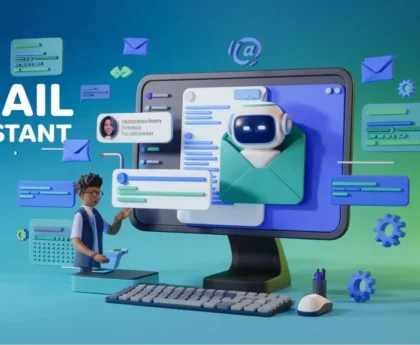Effective communication with Human Resources is crucial for many aspects of your professional life. Whether you’re inquiring about benefits, addressing a workplace issue, or applying for an internal position, knowing how to articulate your needs clearly and professionally is vital. But how do you ensure your message cuts through the noise and prompts the response you’re hoping for? This article offers quick tips to help you master the art of crafting impactful emails to HR that yield results.
Understanding the Importance of Professional Communication
Why does the way you communicate with HR matter so much? HR departments often manage sensitive information and juggle a high volume of inquiries. A poorly written email can get lost in the shuffle, misinterpreted, or even create a negative impression. Clear, concise, and professional communication demonstrates respect for their time and expertise, and significantly increases the likelihood of a positive outcome. Think of your email as a reflection of your professionalism – what message are you sending?
Pre-Writing Considerations – Planning Your Approach
Before you even open your email client, take a moment to plan your approach. This crucial preparatory work can save you time and prevent misunderstandings down the line. Consider these points –
- Identify Your Objective – What exactly do you hope to achieve with your email? Are you seeking information, requesting action, or reporting an issue? Clearly defining your objective will help you stay focused and avoid ambiguity.
- Gather Relevant Information – Do you have all the necessary information at your fingertips? This might include employee ID, policy numbers, dates, or supporting documentation. Having this information readily available will streamline the communication process and prevent back-and-forth emails.
- Choose the Right Tone – The appropriate tone depends on the context of your email. While professionalism is always important, the level of formality can vary. For example, a casual inquiry about upcoming company events might warrant a slightly more relaxed tone than a formal complaint regarding workplace harassment.
Crafting the Perfect Email – Key Elements
Now that you’ve planned your approach, let’s delve into the key elements of crafting an effective email to HR –
- Subject Line Matters – The subject line is the first (and sometimes only) thing HR sees. Make it clear, concise, and specific. Instead of a vague “Question,” try “Inquiry Regarding Vacation Policy” or “Request for Update on Benefits Enrollment.” A well-crafted subject line helps HR prioritize your email and ensures it doesn’t get overlooked.
- Start with a Professional Greeting – Always begin your email with a professional greeting, such as “Dear Mr./Ms./Mx. [Last Name]” or “Dear Human Resources Team.” If you’re unsure of the recipient’s name or preferred title, err on the side of formality.
- Get Straight to the Point – Avoid rambling or burying the lead. State your purpose clearly and concisely in the opening paragraph. For example, “I am writing to inquire about…” or “I am contacting you to request…”
- Provide Necessary Details – Include all relevant information to support your request or inquiry. Be specific and avoid making assumptions. For instance, if you’re requesting a leave of absence, specify the dates you’ll be away and the reason for your absence.
- Use Clear and Concise Language – Avoid jargon, slang, and overly complex sentences. Opt for simple, direct language that is easy to understand. Remember, clarity is key.
- Maintain a Professional Tone – Even if you’re addressing a sensitive or frustrating issue, maintain a professional and respectful tone throughout your email. Avoid accusatory language, personal attacks, or emotional outbursts.
- Proofread Carefully – Before hitting send, proofread your email carefully for any errors in grammar, spelling, and punctuation. Even minor errors can detract from your credibility and undermine your message.
- End with a Polite Closing – Conclude your email with a polite closing, such as “Thank you for your time and consideration,” or “I look forward to hearing from you soon.”
- Include Your Contact Information – Make sure your email signature includes your full name, employee ID (if applicable), and contact information. This makes it easy for HR to follow up with you.
Specific Scenarios and Best Practices
Let’s examine some specific scenarios and the best practices for writing mail to HR in each situation –
- Inquiring About Benefits – When inquiring about benefits, be specific about the information you’re seeking. For example, “I am writing to inquire about the details of the company’s dental insurance plan.”
- Requesting a Leave of Absence – When requesting a leave of absence, provide ample notice and include all relevant information, such as the dates of your absence, the reason for your absence, and any supporting documentation.
- Reporting a Workplace Issue – When reporting a workplace issue, be factual and objective. Avoid making assumptions or assigning blame. Focus on describing the specific events that occurred and their impact.
- Applying for an Internal Position – When applying for an internal position, highlight your relevant skills and experience and explain why you’re interested in the role. Tailor your email to the specific requirements of the position.
The Art of Follow-Up
What if you don’t receive a response to your email within a reasonable timeframe? It’s generally acceptable to send a polite follow-up email. Reiterate your original request or inquiry and express your continued interest in receiving a response. Avoid being demanding or accusatory. A simple “Following up on my previous email” subject line can do wonders.
Improving Your HR Communication Skills
Mastering the art of effective communication with HR isn’t just about following rules; it’s about cultivating a skill that will benefit you throughout your career. By adopting these quick tips, you can significantly enhance your ability to communicate effectively with HR and achieve your desired outcomes. Remember, clear, concise, and professional communication is a valuable asset in any professional setting. What are you waiting for? Start practicing writing mail to HR today!




